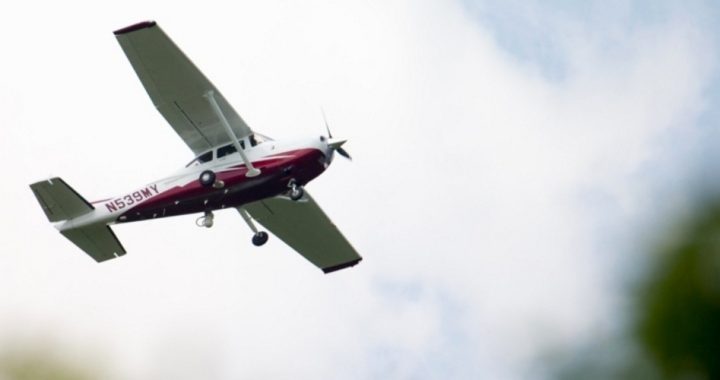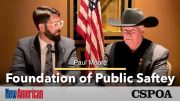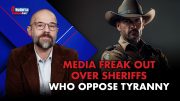
The FBI has been secretly operating a small “civilian air force” of low-flying planes conducting surveillance across the country, according to a report by the Associated Press. The planes are equipped with high definition cameras that capture video and still pictures of the area below the planes. Some are also equipped with cell site simulators which mimic cell towers and capture data from all mobile phones in the area by forcing those phones to connect to the signal coming from the plane instead of carriers’ cell towers.
At least 50 such planes were used to fly aerial surveillance missions over more than 30 cities in 11 states in one 30-day period, the AP says. Some of the cities included in the surveillance were Boston, Chicago, Dallas, Houston, Minneapolis, Phoenix, and Seattle, as well as several cities in southern California. Most of those missions were conducted without any judicial approval. The program appears to date back more than a decade. Since at least 2003 there have been reports of suspicious planes flying low and in tight circles over neighborhoods and cities all across America — many resulting in 911 calls asking local police to investigate.
It’s not just the FBI that maintains these secret spy planes. Both the DEA and U.S. Marshals service have their own secret fleets as well. According to a 2011 report by the inspector general of the Justice Department, the DEA had 92 aircraft at that time — all registered to non-existent companies.
FBI spokesman Christopher Allen released a statement saying, “The FBI’s aviation program is not secret. Specific aircraft and their capabilities are protected for operational security purposes.” However, the FBI has taken great pains to conceal its “not secret” program, including hiding the ownership of the planes under at least 13 fictitious companies with names such as FVX Research, KQM Aviation, NBR Aviation, and PXW Services. Most of the planes’ registration forms list the name “Robert Lindley” as the CEO of the companies. The forms show at least three distinct signatures and two spellings of “Robert Lindley.” Other forms list the name “Robert Taylor” and have signatures that look similar to some of Robert Lindley’s.
Allen also claims that “the aircraft are not equipped, designed or used for bulk collection activities or mass surveillance”; however, the high-definition video cameras and cell tower spoofing equipment on board these planes are precisely the types used for those purposes. By sweeping large areas (even with a specific target in mind), the video images and cell phone data captured would necessarily include images and data of hundreds or thousands of citizens who are not the subjects of any investigation. One flight alone circled above at least 40,000 residents of Anaheim, California. If that is not “bulk collection” and “mass surveillance,” then nothing is.
The claim by Allen that “bulk collection” and “mass surveillance” are not taking place simply does not stand up under scrutiny. Especially when some of the flight data show these planes spending long periods circling enclosed buildings and areas where aerial surveillance would be worthless — but capturing mobile phone data would be extremely worthwhile. Some of those enclosed buildings and areas include Ronald Reagan National Airport in Washington, D.C. and the Mall of America in Bloomington, Minnesota.
The technology that captures mobile phone data produces results that are quite revealing. The data collected show the numbers and subscriber names of the phones that connect to the cell site simulators as well as other metadata that can be used to identify not only the owners of the phones, but also in some cases the names and numbers of contacts stored in those phones.
When the AP began investigating the connection between these suspicious planes and the fake companies listed on the registration forms, it was discovered that many of the “companies” have post office boxes in Bristow, Virginia, near a regional airport which is used for private and charter flights. One of those post office boxes is shared with the Justice Department.
In a strange twist of logic, the FBI asked the AP not to report the names of the bogus companies, claiming it would cause the American taxpayers undue expense if the cover of those companies was blown, because the FBI would just have to set up new shell companies to continue the program — a program that, remember, is “not secret.”
Allen also asserted that the FBI flights are in full compliance with the agency’s rules. However, those rules are not available to the public except in a heavily redacted form. What’s worse, the Justice Department’s recently published privacy policy for federal agencies’ use of surveillance drones (unmanned aircraft) does not apply to piloted aircraft. Apparently Americans are afforded protection from being spied on only if it’s done by remote control. That policy is tantamount to making it legal to peep into your neighbor’s window if you stand in the bushes to do it, but illegal if you set up a video camera to do it in your absence. Only in Washington would that pass for logic.
In the wake of the expiration of certain provisions of the PATRIOT Act, constitutionalists need to keep the pressure up to dismantle all these programs that are designed to strip them of their privacy and God-given rights.
Photo shows one of the surveillance planes being used by the FBI: AP Images




